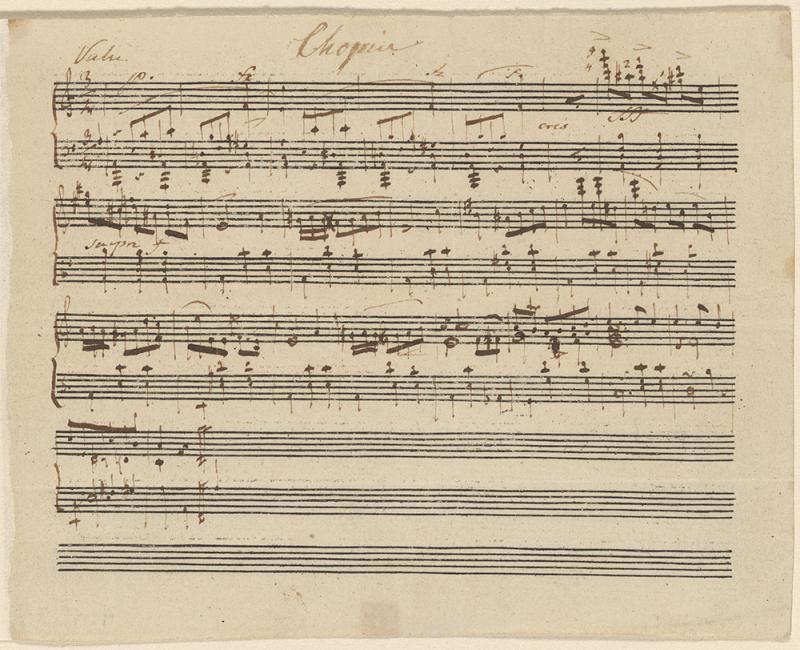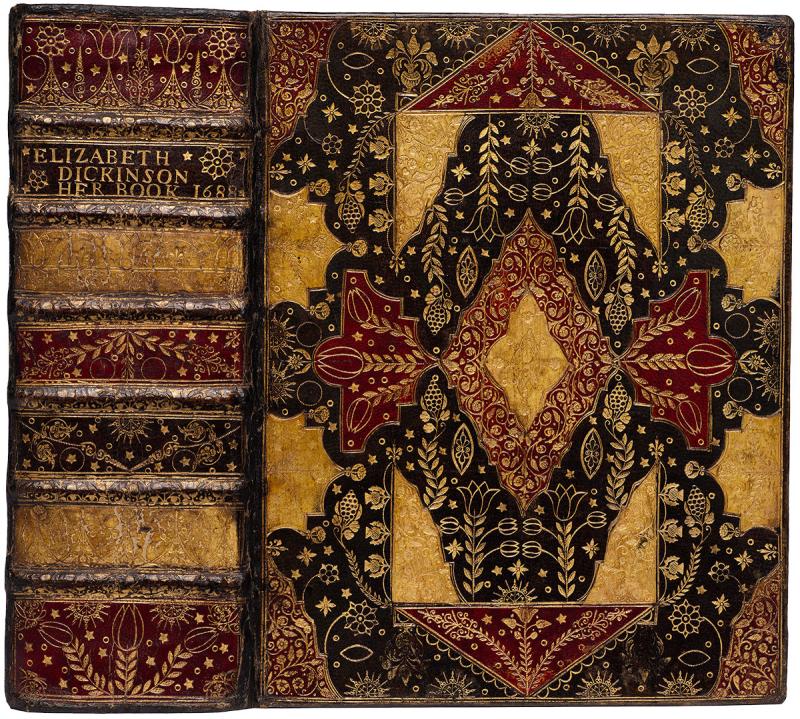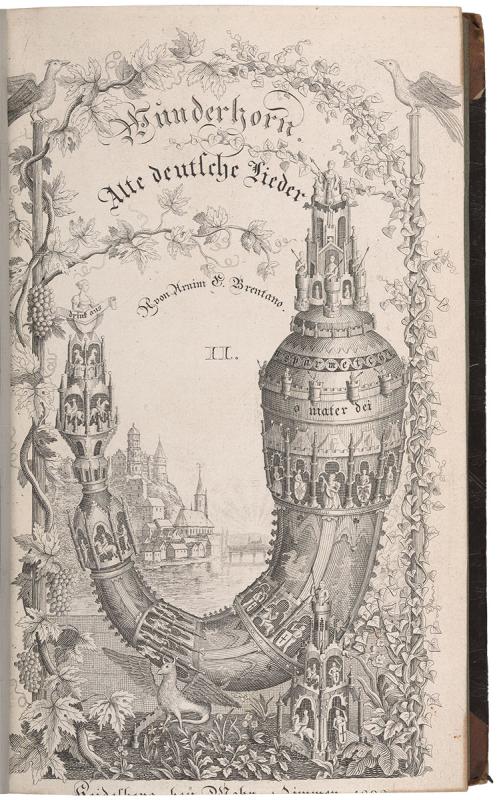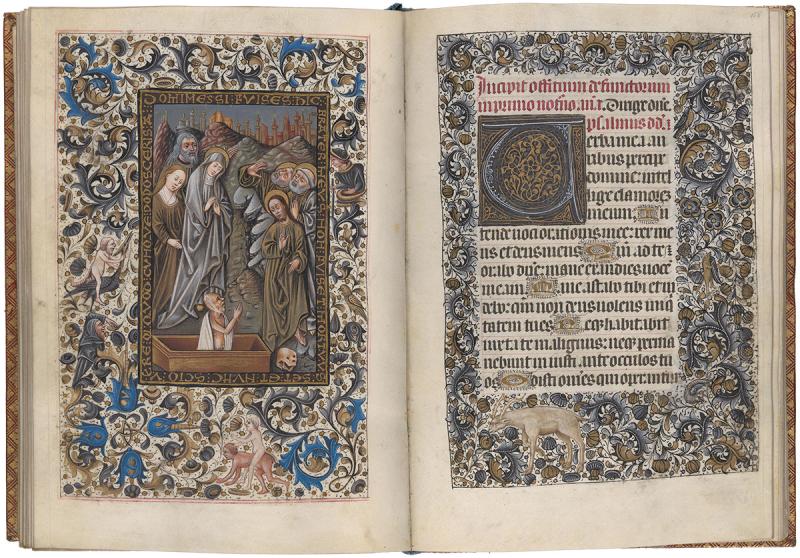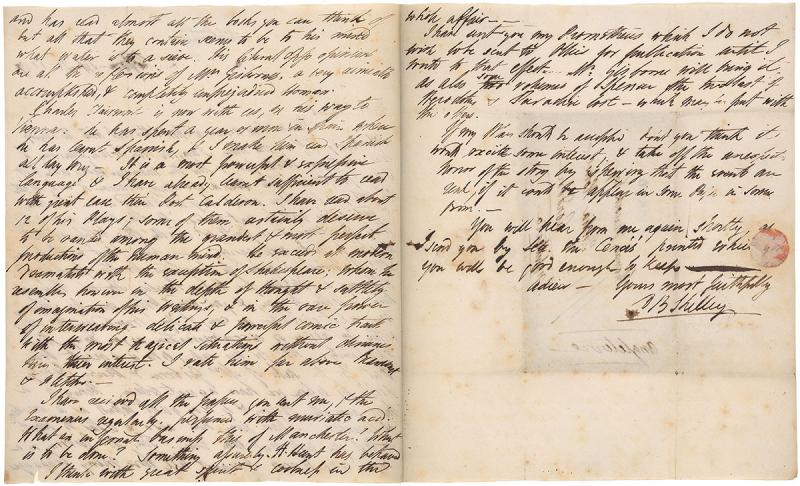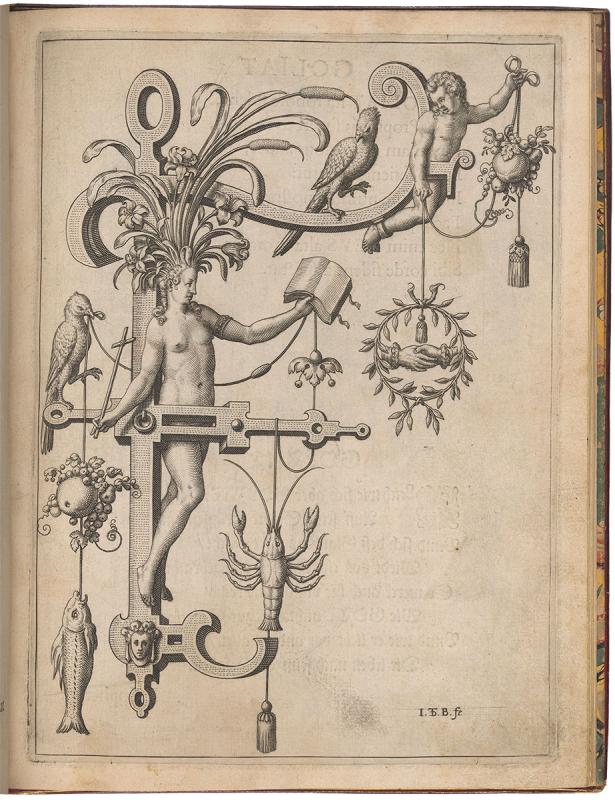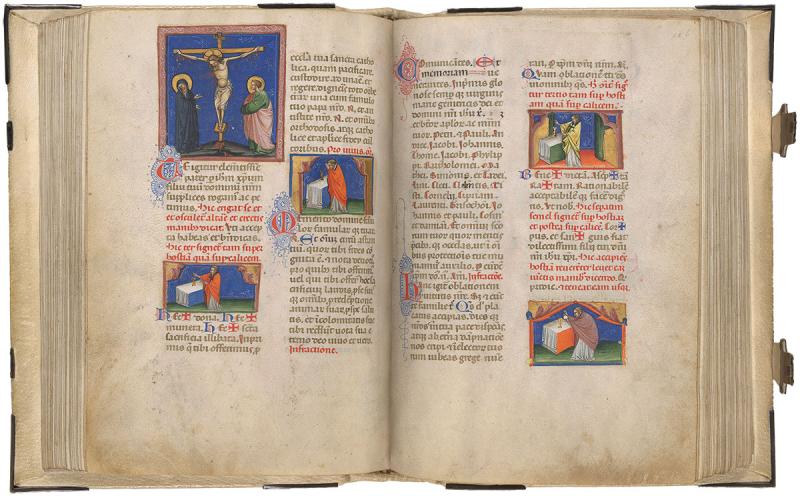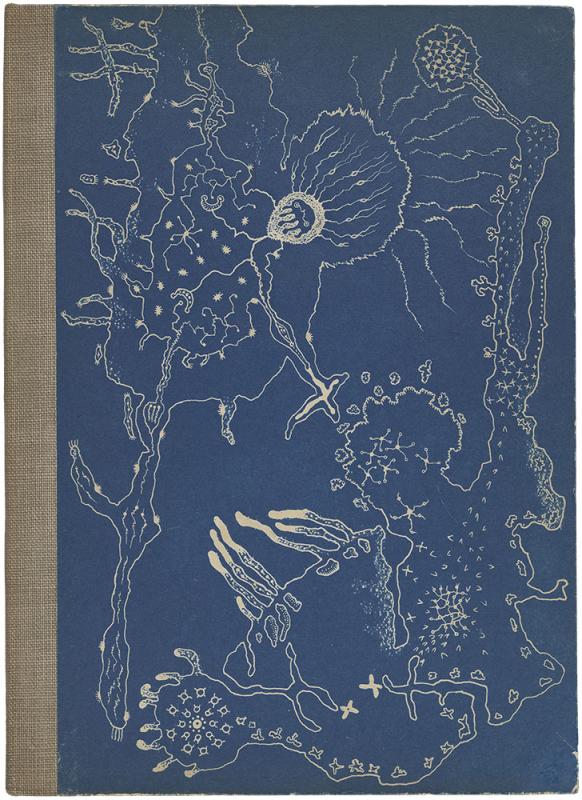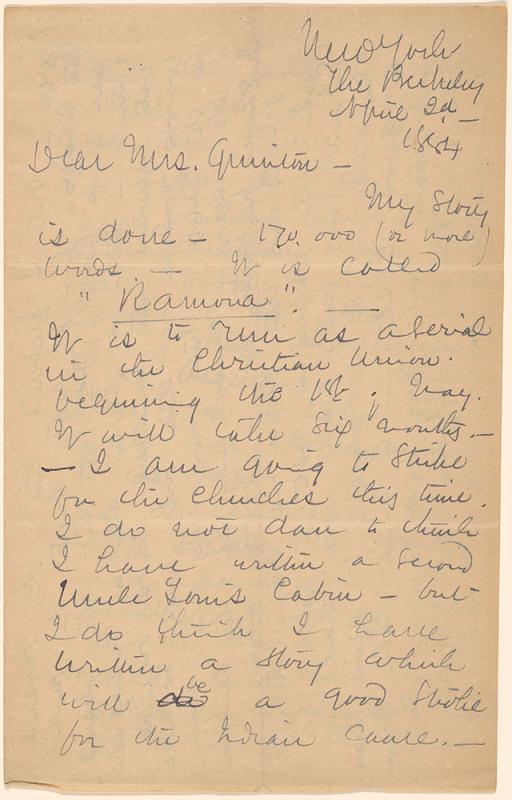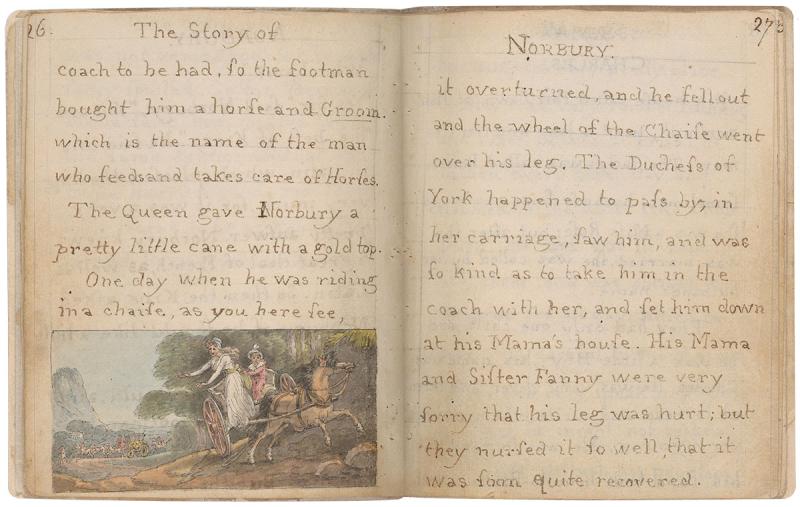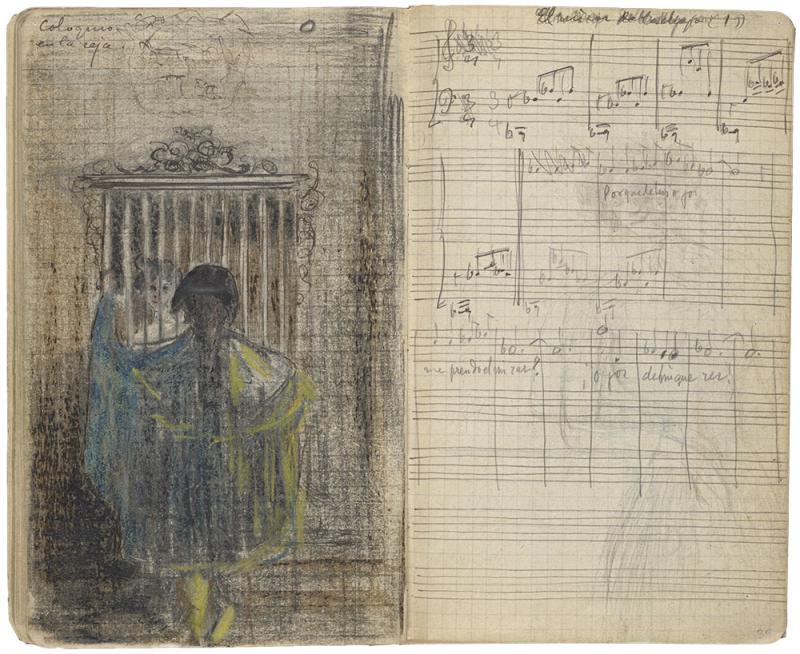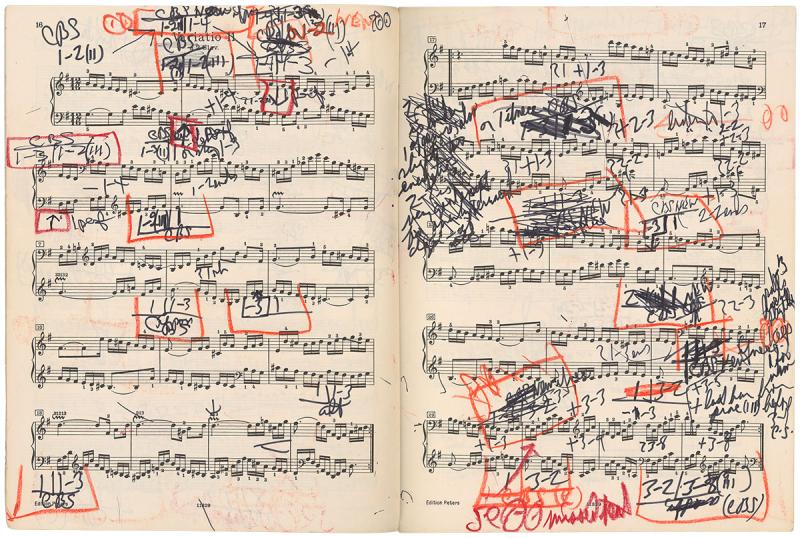Objects on view in J. Pierpont Morgan’s library reflect the past, present, and future of the collections in four curatorial departments, comprising illuminated manuscripts from the medieval and Renaissance eras, five hundred years of printed books, literary manuscripts and correspondence, as well as printed music and autograph manuscripts by composers. These selections, which rotate three times a year, provide an opportunity for Morgan curators to spotlight individual items, to consider their historical and aesthetic contexts, and to tell the stories behind these artifacts and their creators. Here are some highlights of the rotation currently on view in the East Room, as well as the special installation in the Rotunda entitled Chopin’s New Waltz, focusing on a new work by the renowned composer Frédéric Chopin, discovered in the Morgan’s collection in 2024.
CHOPIN’S NEWLY DISCOVERED WALTZ
This previously unknown waltz, written in Chopin’s hand and very likely composed by him, is the first newly identified work by the Polish composer since the 1930s. The manuscript’s tiny size belies the impact of the discovery, which has sparked a profusion of performances and news coverage since its announcement last October. Chopin typically used such small-format paper for manuscripts meant as gifts for friends and students, though the lack of his signature on this one suggests that he never gave it to anyone. However, the care with which he notated dynamics, fingerings, accents, and phrase marks indicates that he intended it to be performed. The compact composition starts with several moody, dissonant measures that culminate in a loud outburst before a melody of characteristically Chopinesque melancholy begins.
DRESSING “HER BOOK” MOST HANDSOMELY
The name of the seventeenth-century workshop responsible for this elegant example of English Restoration binding has never been identified; books bound by the firm are easily recognizable, however, thanks to the distinctive tulip, grape, and thistle motifs used in the workshop’s intricate designs. A twentieth-century scholar eager to assign the bindery a name opted for “Elizabeth Dickinson’s Binder,” inspired by the emphatic gold-tooled inscription on the Morgan’s copy of this Book of Common Prayer: “ELIZABETH DICKINSON HER BOOK 1688.” Declarative ownership inscriptions worded in that fashion were common during Dickinson’s era.
FABRICATING THE PAST
The Boy’s Magic Horn is a three-volume compilation of songs, poems, and German folklore compiled at the beginning of the nineteenth century, purportedly from medieval manuscripts, early publications, and oral culture. The collection’s popularity advanced the public’s enthusiasm for medieval culture—one of the hallmarks of the artistic movement known as German Romanticism. Editors Ludwig Achim von Arnim and Clemens Brentano, poets themselves, took great liberties with the texts, sometimes fabricating them completely in a medievalist style. This fanciful frontispiece for the second volume was etched by Ludwig Emil Grimm, the younger sibling of the famous Brothers Grimm.
A RARE SPANISH BOOK OF HOURS
Books of Hours contain prayers that were intended to be recited by laypeople at set times throughout the day. This luxurious example was produced in Spain, probably for the Infante Don Alfonso de Castile (1453–1468), younger brother of Queen Isabella I of Castile (1451–1504). This miniature, which depicts the miracle of Christ raising Lazarus, marks the canonical hour of Matins from the Office of the Dead, a cycle of prayers for the souls of the recently deceased. The illumination and its surrounding border are painted in grisaille, a style of monochromatic painting usually in shades of brown or grey. Here, the artist has enlivened the neutral palette with flourishes of gold and royal blue.
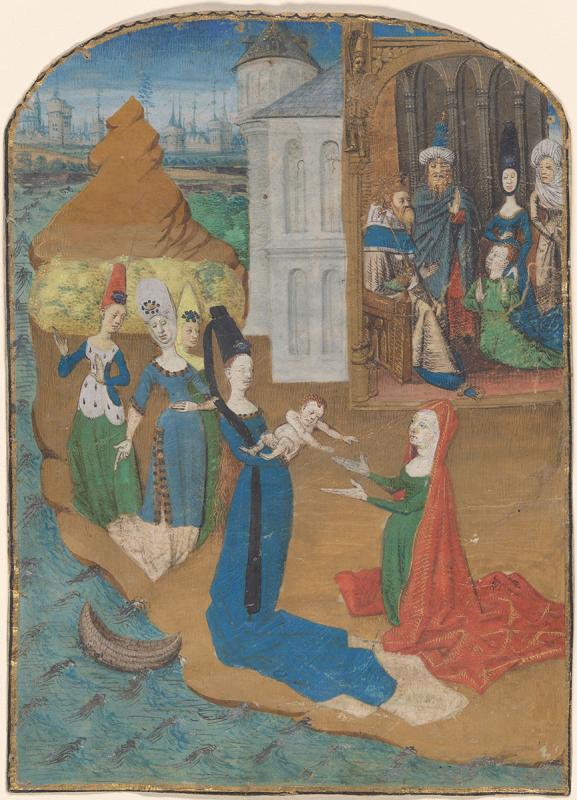
Finding of Moses and Presentation of Moses to Pharaoh, cutting from a Speculum historiale by Vincent of Beauvais (ca. 1190–1264), illuminated by the Master of the Geneva Boccaccio, France, Angers(?), ca. 1460. Purchased as the gift of Dr. Robert DaVanzo and the Driver Family Foundation, 2024, MS M.1251.1
SHELLEY READS CALDERÓN
In the summer of 1819, the English poet Percy Bysshe Shelley discovered the works of the seventeenth-century Spanish playwright Pedro Calderón de la Barca. In this letter to his close friend Thomas Love Peacock, Shelley extols Calderón’s verse dramas, writing that they “deserve to be ranked among the grandest and most perfect productions of the human mind.” He compares Calderón to Shakespeare for his “depth of thought and subtlety of imagination,” as well as “the rare power of interweaving delicate and powerful comic traits with the most tragical situations.” Shelley was so taken with Calderón that he translated parts of El mágico prodigioso, a play about the early Christian saints Cyprian and Justina, which Mary Shelley, Percy’s widow, published after his death.
THE FINDING OF MOSES
This miniature was cut from a copy of the Mirror of History, a twelfth-century encyclopedia that remained popular for centuries. The deluxe version that once included this image was likely commissioned by King René of Anjou (1409–1480). This miniature, along with five others, was cut out and pasted into an album of cuttings made for the Basel-based silk merchant Daniel Burckhardt-Wildt (1752–1819). Shown here is the Old Testament story of the Finding of Moses. The pharaoh’s daughter, finely dressed in blue, has found the infant in his basket and is handing the child to Moses’s mother, who kneels before her. In the background, an adolescent Moses is presented to the pharaoh, who accepts him as a son.
PICTURING A TO Z
This alphabet book is a tour de force by the engraver, goldsmith, and publisher Theodor de Bry and his son Johann, designed to encourage literacy and Judeo-Christian values. Adorned with grotesque and classical ornamentation, de Bry’s letterforms are images in themselves. Visual clues, such as animals, vegetation, and musical instruments, and the accompanying poems, in both Latin and German, illuminate the symbolism of each design. Here, the letter F represents Faith, with an allegorical figure holding a cross and a Bible while a cherub dangles a handshake medallion, adding a gesture of trust to the idea of faith. As the penultimate line of the poem states: “For hope alone is the most faithful companion of life.”
A GUIDE TO CELEBRATING MASS
A missal is a liturgical book containing instructions and texts necessary for the celebration of Mass in the Catholic Church. This manuscript has been enhanced with a series of miniatures that illustrate the gestures and rituals of clerics during Mass. The image at top left shows the Crucifixion of Christ. The Cross, resembling the letter T, was often used to illustrate Te igitur (Thee, therefore, most merciful Father), the first words of the opening prayer of the Canon of the Mass. Other accompanying miniatures show priests blessing the chalice of wine and raising the host (a wafer), which represent the blood and body of Christ, respectively.
SEIZING THE MEANS OF PRODUCTION
The poets, critics, and novelists Laura Riding and Robert Graves started their own imprint in London in 1927 called the Seizin Press. The name relates to the Middle English word seisin, which means “possession” or “freehold”—suggesting the authors were staking a claim to their careers and seizing their means of production. Some of the most beautiful books they produced were issued after the couple relocated their press to Deyá, Majorca. Riding’s long-form poem Laura and Francisca is one of several limited editions published on the Spanish island with cover designs by their friend Len Lye. Born in New Zealand, Lye is most well known as an experimental filmmaker who drew abstract forms directly onto film stock.
“A GOOD STROKE FOR THE INDIAN CAUSE”
In this letter, American author Helen Hunt Jackson announces the completion of her 1884 novel Ramona, which details the tragic erasure of Indigenous life in California. Published the same year as Elk v. Wilkins— the US Supreme Court decision that denied Native Americans birthright citizenship—Ramona protests the community’s mistreatment by the American public. Though Jackson doubted that she had written a novel poised to have the same sociopolitical impact as Harriet Beecher Stowe’s Uncle Tom’s Cabin (1852) did for African Americans, she believed her story would still “be a good stroke for the Indian cause.” Ramona went on to become a commercial success but failed as a catalyst for social and political change due to its idealized portrayal of the past.
STORIES MADE FOR, BY, AND ABOUT CHILDREN
These eight stories penned by teenager Sophia Elizabeth Burney for her younger sister Cecilia are based on the educations, excursions, pets, relatives, and friends of the Burney children, members of an elite British family that included author Frances Burney (their aunt) and artist Edward F. Burney (their uncle). Unlike most children’s stories of the late eighteenth century, there are no representations of misbehavior or moral correction. Instead, the children are praised for their kindness, manners, and studiousness. In this ink-and-watercolor drawing, a boy named Norbury falls from a chariot, which had been gifted to him by King George after he had impressed the monarch with his Latin. Beside the book is the fabric envelope originally made to encase it.
SHELLEY READS CALDERÓN
In the summer of 1819, the English poet Percy Bysshe Shelley discovered the works of the seventeenth-century Spanish playwright Pedro Calderón de la Barca. In this letter to his close friend Thomas Love Peacock, Shelley extols Calderón’s verse dramas, writing that they “deserve to be ranked among the grandest and most perfect productions of the human mind.” He compares Calderón to Shakespeare for his “depth of thought and subtlety of imagination,” as well as “the rare power of interweaving delicate and powerful comic traits with the most tragical situations.” Shelley was so taken with Calderón that he translated parts of El mágico prodigioso, a play about the early Christian saints Cyprian and Justina, which Mary Shelley, Percy’s widow, published after his death.
INSPIRED BY GOYA In this small notebook, Spanish composer Enrique Granados sketched ideas for several works: Los ovillejos (a one-act zarzuela, or opera, that was left incomplete), the Tonadillas (a group of songs), and Goyescas (a 1911 piano suite and 1915 opera that borrowed ideas originally planned for Los ovillejos). His sketchbook is open to a drawing by the composer, reminiscent of the works of Francisco Goya (1746–1828), entitled El coloquio en la reja (Dialogue at the window), which became the title of the second number in his piano suite Goyescas. On the facing page is a musical sketch for the tonadilla “El mirar de la maja” (The gaze of the beloved).
A FAMOUS RECORDING COMES INTO FOCUS
While the German composer Johann Sebastian Bach achieved only modest fame during his lifetime, by the twentieth century he had come to be seen as an essential icon of European culture. The twentieth-century Canadian pianist Glenn Gould was known for his correspondingly iconic recordings of Bach’s keyboard music. For his second recording of Bach’s Goldberg Variations, with CBS Records in 1982, Gould marked the score heavily to show which takes were to be used in the famously complex edit of the recording.
A GUIDE FOR YOUNG EXPLORERS
Gregorio Dati, a silk merchant and avid sailor, wrote La sfera as a guide to world geography directed at children of the Florentine merchant class. The survival of the text in more than 150 manuscript copies and several printed editions is a testament to its popularity. It covered topics of astronomy and cartography, as well as culture and religion. Most of the manuscripts share a standard set of illustrations inspired by medieval world maps and portolan charts, which were used for navigation. Shown here is a map of the Mediterranean. The waters are a green swirl, except for the Red Sea, which is a deep red. In the center of the map is Noah’s Ark, resting atop two mountains.
Collections Spotlight is funded in perpetuity in memory of Christopher Lightfoot Walker.

